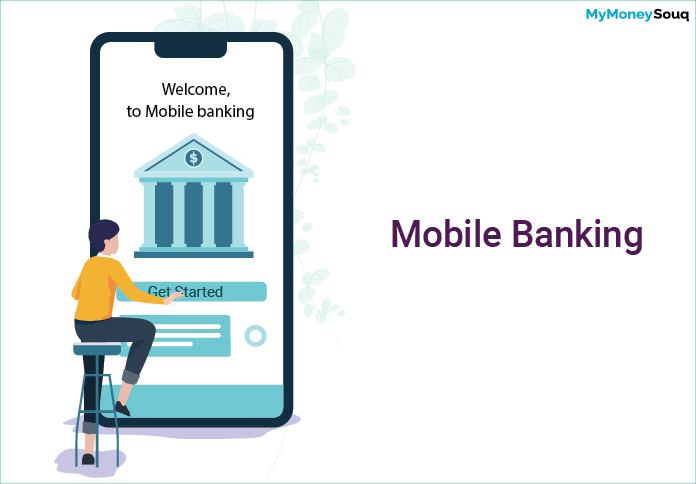Mobile Banking is a way to perform financial transactions and various other banking activities using mobile phones. In the digital age, where most of the banks are providing mobile banking facilities with impressive and user-friendly mobile applications, banking has become easy and convenient. Any banking customer can avail services anytime, anywhere without the need to visit the bank.
Previously, for any financial transaction like transferring money to other accounts, know bank account balance, apply for a debit card, cheque book, etc. banking customers had to visit the bank. But with this massive rise in technology, banking became comfortable where we can just use our phone and get things done in a short time.
Check: How to take your ATM balance check
Types of Mobile Banking
The idea of Mobile Banking service is to make banking easy and quick for the customers. This banking way works in different ways and two most important and widely used types are,
-> Through Mobile applications
Mobile Banking through mobile applications is a well aware and widely used service. Every bank has their own mobile application which is provided for free. Customers who have a smartphone can download the mobile application and register with account details. Banking using mobile apps is very popular because it is not just about checking balance and getting notified about any activity in the account. You can transfer your funds to other accounts, pay bills, apply for a new debit card, cheque book, and even apply for new bank accounts through the app and much more.
-> Through SMS
Banking customers who don’t have a smartphone can avail text message alerts on their phone by registering for Mobile Banking. These alerts can be of bank balance, any deposits, withdrawals, debit and credits into the account. Some banks provide this service for free while some charge a minimal fee.
In the UAE, Dubai Islamic Bank charges AED 5 per month for SMS banking. Banks like ADIB, ADCB, CBD provides SMS banking service for free.
SMS banking is not just limited to one-way alerts, but a customer can also send their bank a message. Each bank has SMS codes for services like account balance, mini statement, etc.
For instance, to know account balance, banking customers can send a particular SMS code to the number provided by the bank from their registered mobile number. But SMS banking is limited to only certain activities like account balance, last transaction, blocking cards, etc.
Also, read: All about Online banking in the UAE
Advantages of Mobile Banking
One of the biggest advantages of Mobile Banking is Easy banking. There are several banking activities you can perform through the app provided by the apps.
- Account Information: Mobile banking service users can get access to their account easily in a few simple steps. They can track their account, get e-statements, check account history, view loan details, credit card information and much more using the app.
- Transactions: Through the app, you can pay your utility bills, traffic fines, telecom bills, etc. App users can also transfer funds to other accounts or self-accounts.
- Apply for new products or services: Using the mobile app, banking customers can apply for new products like cheque book, debit card, etc. Some banks also provide a facility to apply for loans, credit cards, new bank accounts using the app. You can also track your account/ loan or any other product application status on the app.
- Quick access to customer support: In the case of any emergency, you can get in touch with the bank quickly without going to the bank. If your debit or credit card is stolen, the card is misused, and much more, you can contact the customer support of the bank. You can track your support request status as well on the app.
Maybe interested: How to Open a Bank Account Online in UAE
Disadvantages of Mobile Banking
Even though mobile banking has made our banking experience very convenient, there are some disadvantages like,
- Security: It is a major concern for everyone. There can be chances of your application getting hacked but most of the banks offer different steps for authentication like OTP to register mobile number, thumb recognition, etc.
- Major banking services requires a smartphone else you need to visit the bank like always
Important points to be noted
- Mobile banking customers need to ensure they don’t share their bank passwords, OTP, Pin with anyone.
- Don’t open any emails and links that are not known or related to you
- Don’t use the mobile banking application from public Wi-Fi or someone else network
- Have a screen lock on your mobile so that no one can access your phone easily
- Even though banks don’t charge for SMS banking, telecom providers may charge for SMS as per their tariff.

